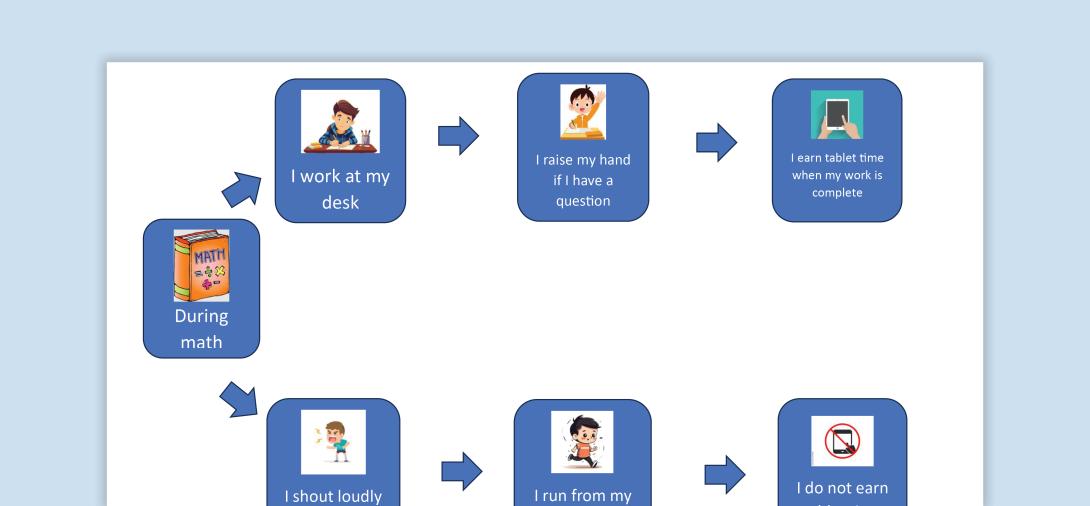Behavior Contingency Map

A visual that shows consequences for expected and challenging behaviors.
When to use
Use when you know the function of a challenging behavior and need to teach an alternative or replacement behavior.
How to use
- Identify and clearly define the challenging behavior to address.
- Determine the antecedent, what happens immediately before the challenging behavior.
- Create a graphic organizer with the antecedent in the center.
- Draw two paths branching off from the antecedent: -The first path should be the agreed upon replacement behavior; the second path should be the challenging behavior.
- Finally, identify the consequence, what happens immediately following the behavior, of each behavior identified.
- Review the behavior contingency map with the student.
- Discuss the different behaviors and the consequences for each behavior.
- Keep the behavior contingency map visible to the student in the setting where the behavior choice is likely to occur.
Tips
- It is important that the student knows how to perform the replacement behavior. Explicit teaching through modeling, reinforcement, prompting, and repetition may be necessary.
- This tool may be beneficial even if it is not used with a student. Members of an educational team can utilize it during a Functional Behavior Assessment process or discussions about behavior change to clarify and assure agreement among team members.
Variations
- Use illustrations, words, or a combination, depending on student need.
